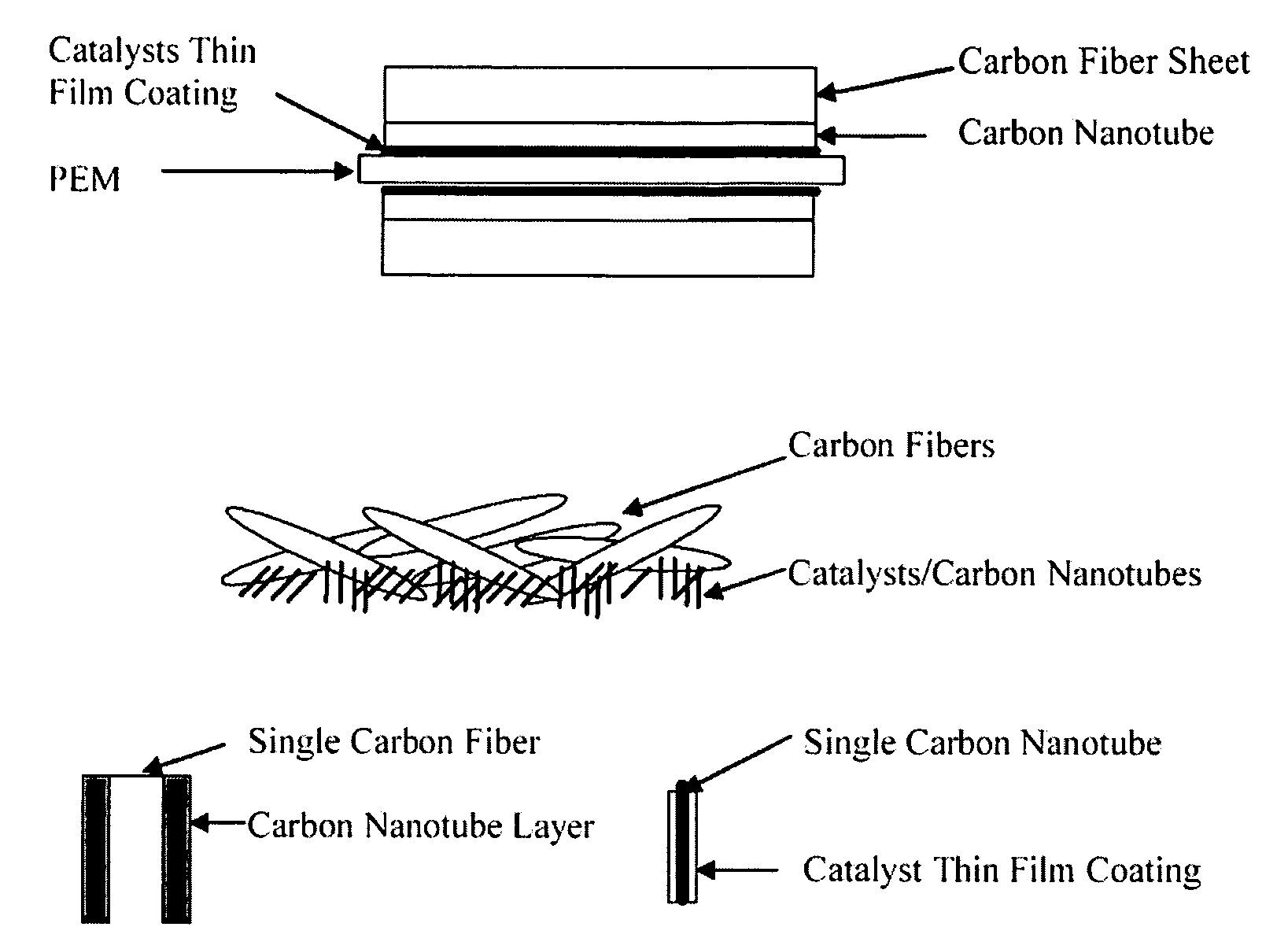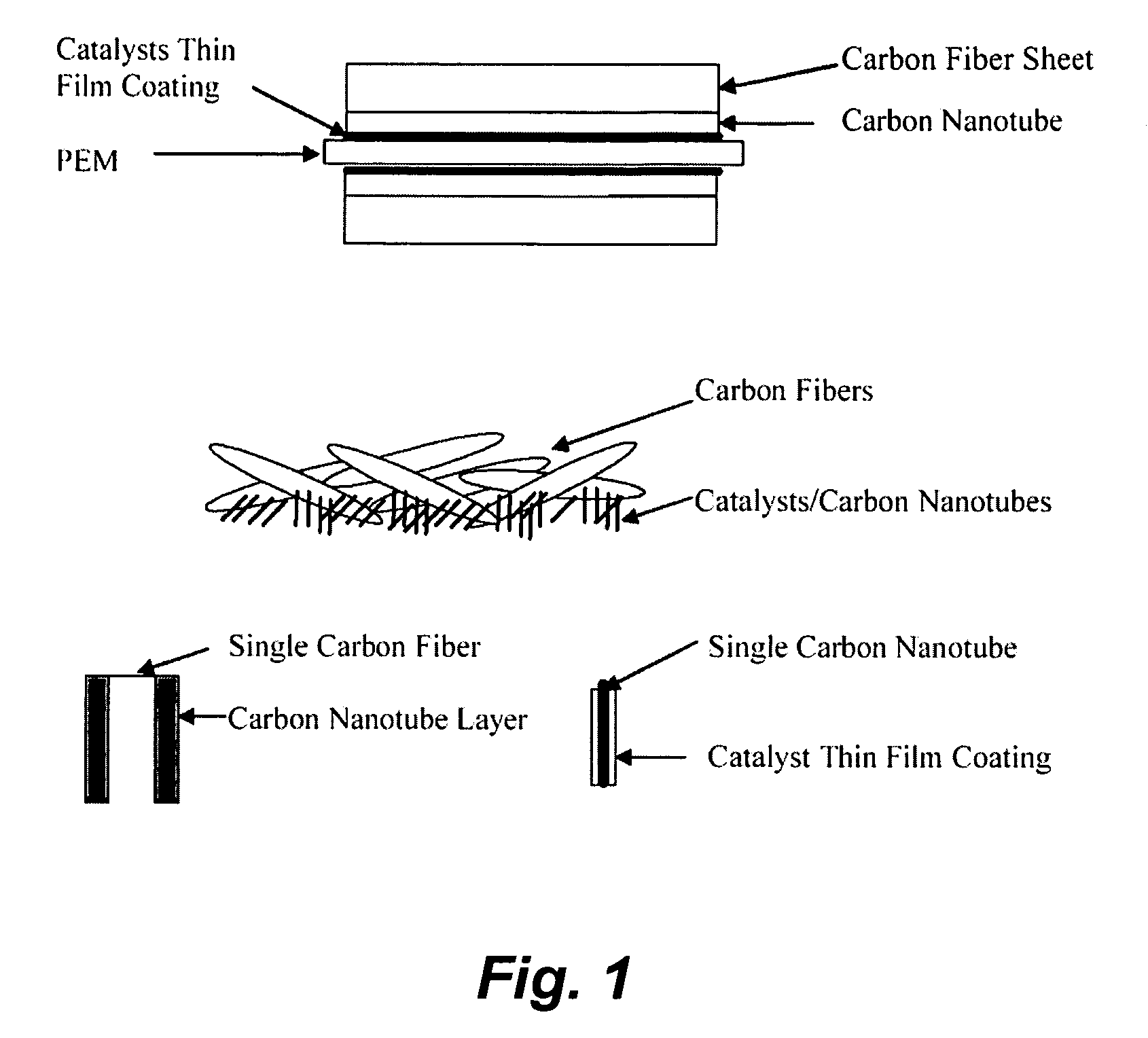Low platinum fuel cells, catalysts, and method for preparing the same
a fuel cell and platinum technology, applied in the field of low platinum fuel cells and catalysts, can solve the problems of cost, activity, stability, and difficulty in developing early scientific experiments into commercially viable industrial products, and achieve the effects of facilitating the migration of protons through the integrated catalyst-electrode layer, high throughput, and efficient processing
- Summary
- Abstract
- Description
- Claims
- Application Information
AI Technical Summary
Benefits of technology
Problems solved by technology
Method used
Image
Examples
example 1
[0149] Pt alloy thin film catalysts were processed through multiplayer depositions and post diffusion annealing. For alloy films with a fixed composition the thickness ratio calculated from atomic weight of the selected elements will be used to control a desired composition. For alloy films with continuously changed composition, the thickness gradient profiles were generated during the deposition process. The ion beam sputtering depositions were carried out under a typical condition of 104 torr and room temperature with pure metal targets. Typical total thickness of multilayers was about 100 Å. Post annealing for inter-diffusion were carried out at 700° C. for 12 hours under 10−8 torr vacuum. The commercial carbon fiber papers were used as substrates for most of the composition studies.
[0150] The carbon nanotubes deposited on the carbon fiber papers were used for enhancing the catalyst surface area and providing a micro gas-diffusion structure. The growth procedures for carbon nano...
example 2
[0164] A Toray® carbon paper substrate was sputtered with 400 Å of nickel. The substrate was then put in a furnace and CNT grown onto it by a CVD method. It is preferable that the CNT layer thickness is around 30 μm. The substrate can be treated with heat and / or chemicals to modify the hydrophobicity of the CNT layer. Platinum was added to the CNT layer by sputtering and / or electrodeposition. Then the sample was put under high hydrostatic pressure in a Nafion® solution. The pressure is preferably around 5000 psi. After several minutes, the sample was taken out and the substrate side without CNT was washed with ethanol. The sample was then air dried for 15 minutes at ambient temperature. Then the sample was again put into the Nafion solution under high pressure. The cycle was repeated 5 times. The finished electrode was then baked on a hotplate to remove residual solvent and hot pressed to produce an anode electrode with a Nafion® film on one side.
example 3
[0165] A Toray® carbon paper substrate was sputtered with 400 Å of nickel. The substrate was then put into a chamber to grow CNT by CVD method. It is preferable that the CNT layer thickness is around 30 μm. The substrate can be treated with heat and / or chemicals to modify the hydrophobicity of the CNT substrate. Platinum was added to the CNT layer by sputtering and / or electrodeposition. Then a thin film of Nafion® was applied onto the CNT layer by spraying and drying. The Nafion® coated sample was put into an iso-propanol solvent and hydrostatic pressures applied for 5 minutes. The sample was then taken out of the pressure vessel and dried. The finished electrode was baked on a hotplate to remove solvent and hot pressed to produce an anode electrode with a Nafion® film with on one side.
PUM
 Login to View More
Login to View More Abstract
Description
Claims
Application Information
 Login to View More
Login to View More - R&D
- Intellectual Property
- Life Sciences
- Materials
- Tech Scout
- Unparalleled Data Quality
- Higher Quality Content
- 60% Fewer Hallucinations
Browse by: Latest US Patents, China's latest patents, Technical Efficacy Thesaurus, Application Domain, Technology Topic, Popular Technical Reports.
© 2025 PatSnap. All rights reserved.Legal|Privacy policy|Modern Slavery Act Transparency Statement|Sitemap|About US| Contact US: help@patsnap.com



